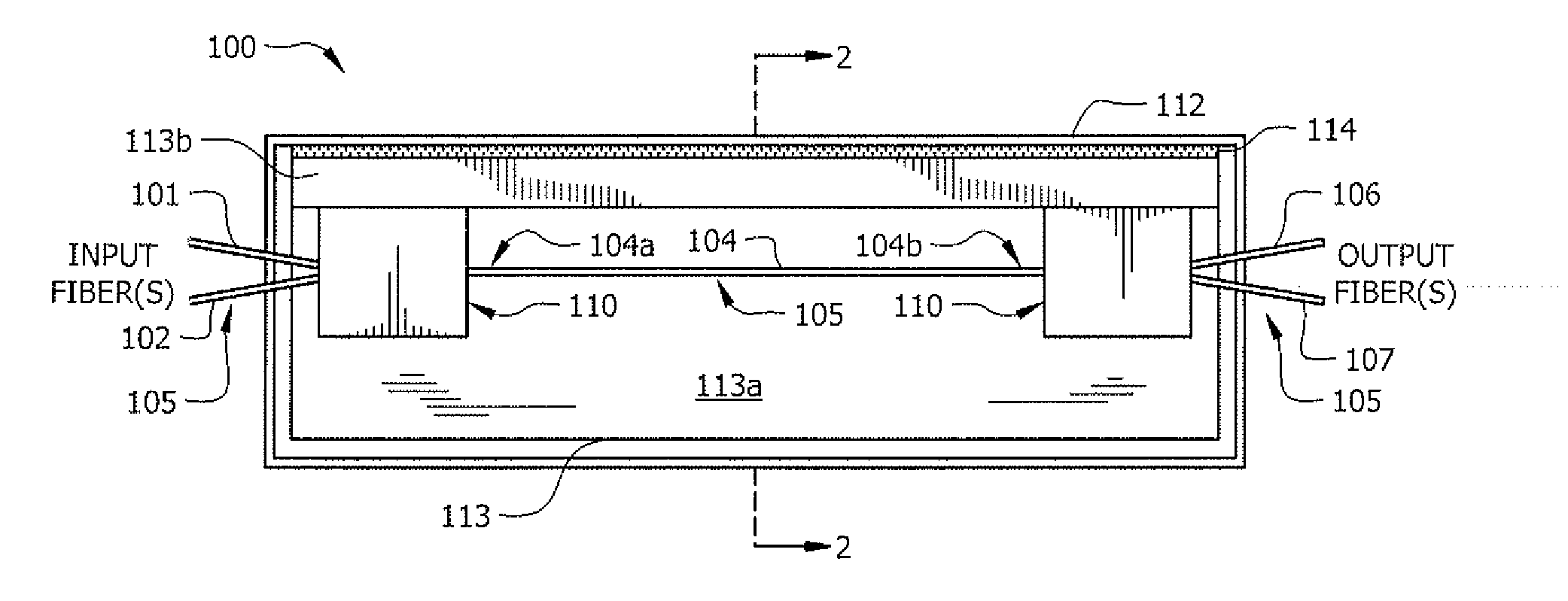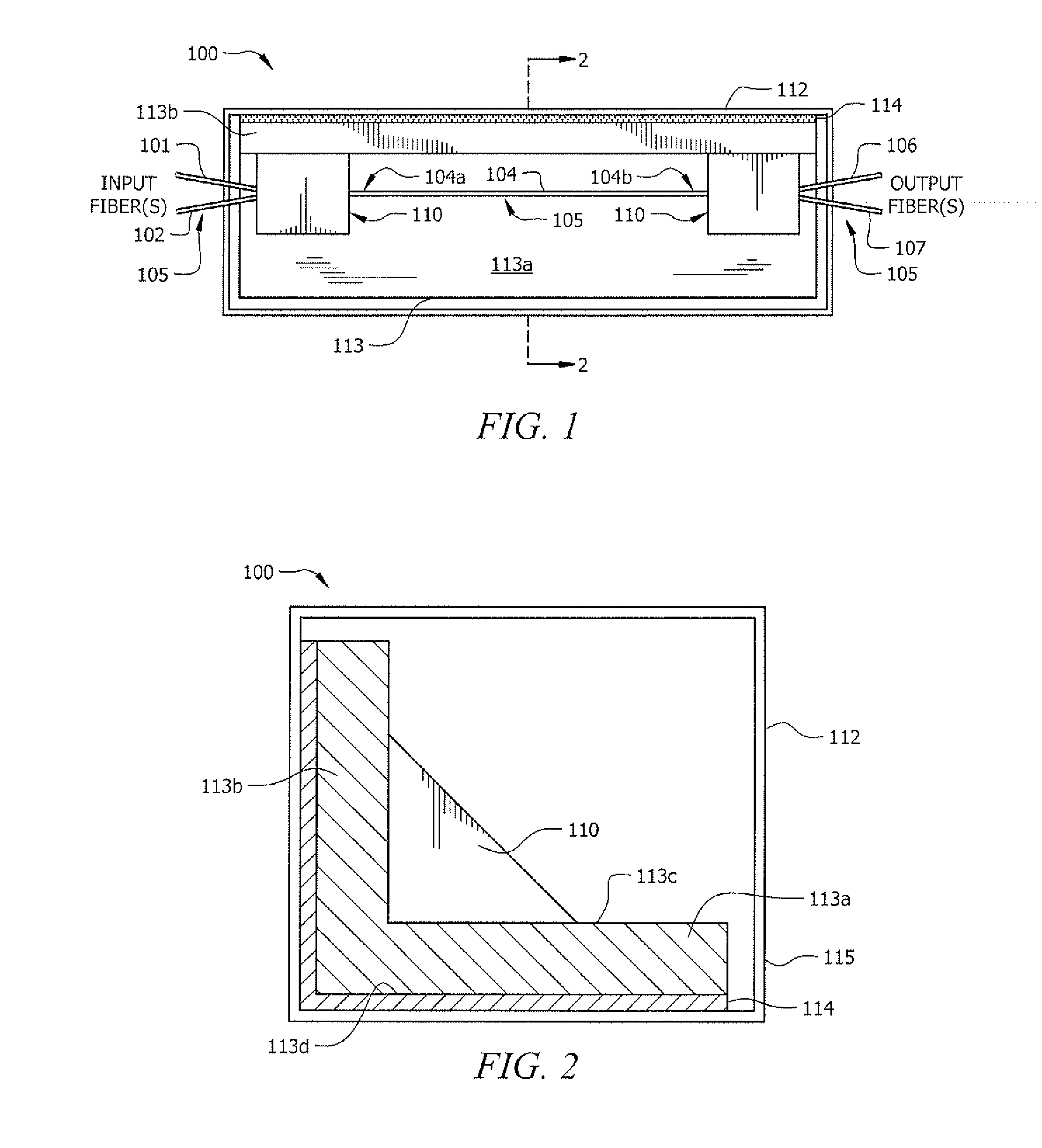Packaging for fused fiber devices for high power applications
a fused fiber and high-power technology, applied in the field of packaging for fused fiber devices, can solve the problems of fragile fiber optic components, fragile optical materials of the optical fiber, and need to be protected, so as to and reduce the risk of damag
- Summary
- Abstract
- Description
- Claims
- Application Information
AI Technical Summary
Benefits of technology
Problems solved by technology
Method used
Image
Examples
examples
[0030]The following non-limiting Examples serve to illustrate selected embodiments of the invention. It will be appreciated that variations in proportions and alternatives in elements of the components shown will be apparent to those skilled in the art and are within the scope of embodiments of the present invention.
[0031]Heat dissipation capabilities for a packaged fused-fiber device according to an embodiment of the invention based on the packaged fused-fiber device 100 shown in FIGS. 1 and 2 (L-shaped substrate and rectangular housing) were tested to compare the cooling of a conventional packaged fused-fiber device comprising a slab-shaped substrate in a rectangular sectioned housing, when used in conjunction with a typical passive external heat sink. The performance of the respective fused-fiber devices were modelled based on thermal imaging data. The packaged fused-fiber device according to an embodiment of the invention was found to be about 2.6 times more efficient at heat di...
PUM
 Login to View More
Login to View More Abstract
Description
Claims
Application Information
 Login to View More
Login to View More - R&D
- Intellectual Property
- Life Sciences
- Materials
- Tech Scout
- Unparalleled Data Quality
- Higher Quality Content
- 60% Fewer Hallucinations
Browse by: Latest US Patents, China's latest patents, Technical Efficacy Thesaurus, Application Domain, Technology Topic, Popular Technical Reports.
© 2025 PatSnap. All rights reserved.Legal|Privacy policy|Modern Slavery Act Transparency Statement|Sitemap|About US| Contact US: help@patsnap.com



